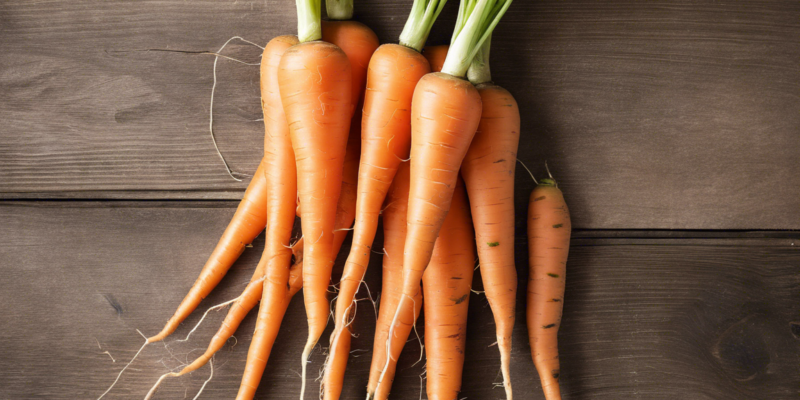Introduction
One of the most common questions that people have when it comes to botany is whether a carrot is a root or a stem. The confusion often arises due to the fact that we see carrots being grown underground like roots, but they also have some features that are typically associated with stems. In order to understand the botanical classification of carrots, it is important to delve deeper into the structure and growth patterns of these popular vegetables.
Roots vs. Stems
Before we can determine whether a carrot is a root or a stem, it is essential to understand the fundamental differences between the two plant parts.
-
Roots: Roots are underground plant organs that are typically responsible for anchoring the plant in the soil and absorbing water and nutrients. They are usually not green due to the lack of chlorophyll, which is necessary for photosynthesis. Roots come in various types, such as taproots (like carrots), fibrous roots, and adventitious roots.
-
Stems: Stems are the above-ground parts of plants that support the leaves, flowers, and fruits. They also aid in the transportation of water, nutrients, and sugars throughout the plant. Stems are usually green due to the presence of chlorophyll, which allows them to carry out photosynthesis.
Anatomy of a Carrot
Now, let’s take a closer look at the anatomy of a carrot to determine whether it is a root or a stem.
-
Taproot: Carrots are classified as taproots, which are a type of root that grows deep into the ground with smaller lateral roots branching off from the main root. Taproots are designed to store nutrients for the plant to use during periods of growth or dormancy.
-
Xylem and Phloem: Within the structure of a carrot, you can find vascular tissues known as xylem and phloem that are responsible for transporting water, minerals, and sugars throughout the plant. This transport system is a characteristic feature of stems rather than roots.
-
No Nodes or Internodes: One of the key features that differentiate stems from roots is the presence of nodes and internodes along the stem. Nodes are points on the stem where leaves, branches, or flowers emerge, while internodes are the spaces between nodes. Carrots do not exhibit this node-internode pattern, further supporting the argument that they are roots.
Conclusion
Based on the anatomy and growth patterns of carrots, it is safe to say that they are indeed roots rather than stems. While they have some vascular tissue like stems, their taproot structure and lack of nodes or internodes align more closely with typical root characteristics. So the next time you enjoy a crunchy carrot, remember that you are savoring a delicious root vegetable!
FAQs
- Can you eat the leaves of a carrot plant?
-
Yes, carrot leaves are edible and can be used in salads or as an herb for flavoring. However, they are more commonly known to be bitter compared to the sweet roots.
-
What is the nutritional value of carrots?
-
Carrots are rich in beta-carotene, fiber, vitamin K1, potassium, and antioxidants. They are known for promoting good vision, heart health, and digestion.
-
How long do carrots take to grow?
-
Carrots typically take between 70 to 80 days to mature, depending on the variety and growing conditions.
-
Can you regrow carrots from scraps?
-
Carrots can regrow their greens from the tops; however, regrowing actual carrots from scraps is unlikely as they require specific conditions to develop roots.
-
Why do carrots come in different colors?
-
Carrots naturally occur in various colors such as orange, purple, red, white, and yellow due to different levels of pigments like beta-carotene, anthocyanins, and lutein.
-
Do carrots help with skin health?
-
Yes, the beta-carotene in carrots converts to vitamin A in the body, which is essential for maintaining healthy skin. It helps repair skin tissues and protects against UV damage.
-
Should carrots be peeled before eating?
-
While the outer skin of carrots is edible, it is recommended to peel them to remove any dirt, pesticides, or residual chemicals that may be present on the surface.
-
Do cooked carrots have the same nutritional benefits as raw carrots?
-
Cooking carrots can break down the cell walls, making some nutrients more bioavailable. However, overcooking can lead to a loss of water-soluble vitamins.
-
Are baby carrots a different variety from regular carrots?
-
Baby carrots are not a different variety but are typically cut and shaped from larger, mature carrots to create small, snack-sized portions.
-
Can rabbits eat carrot tops?
- Yes, rabbits can eat carrot tops in moderation as they are safe for them to consume and provide additional nutrients to their diet.


Comments